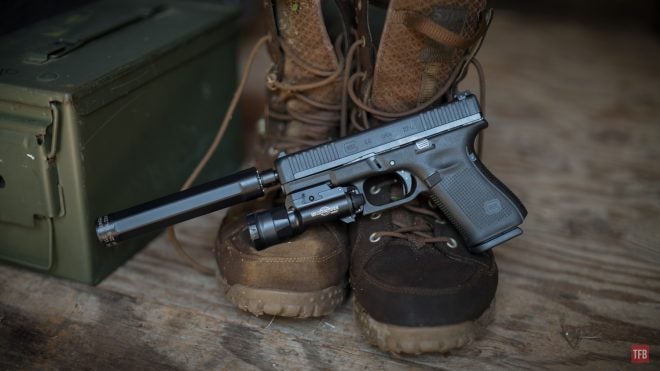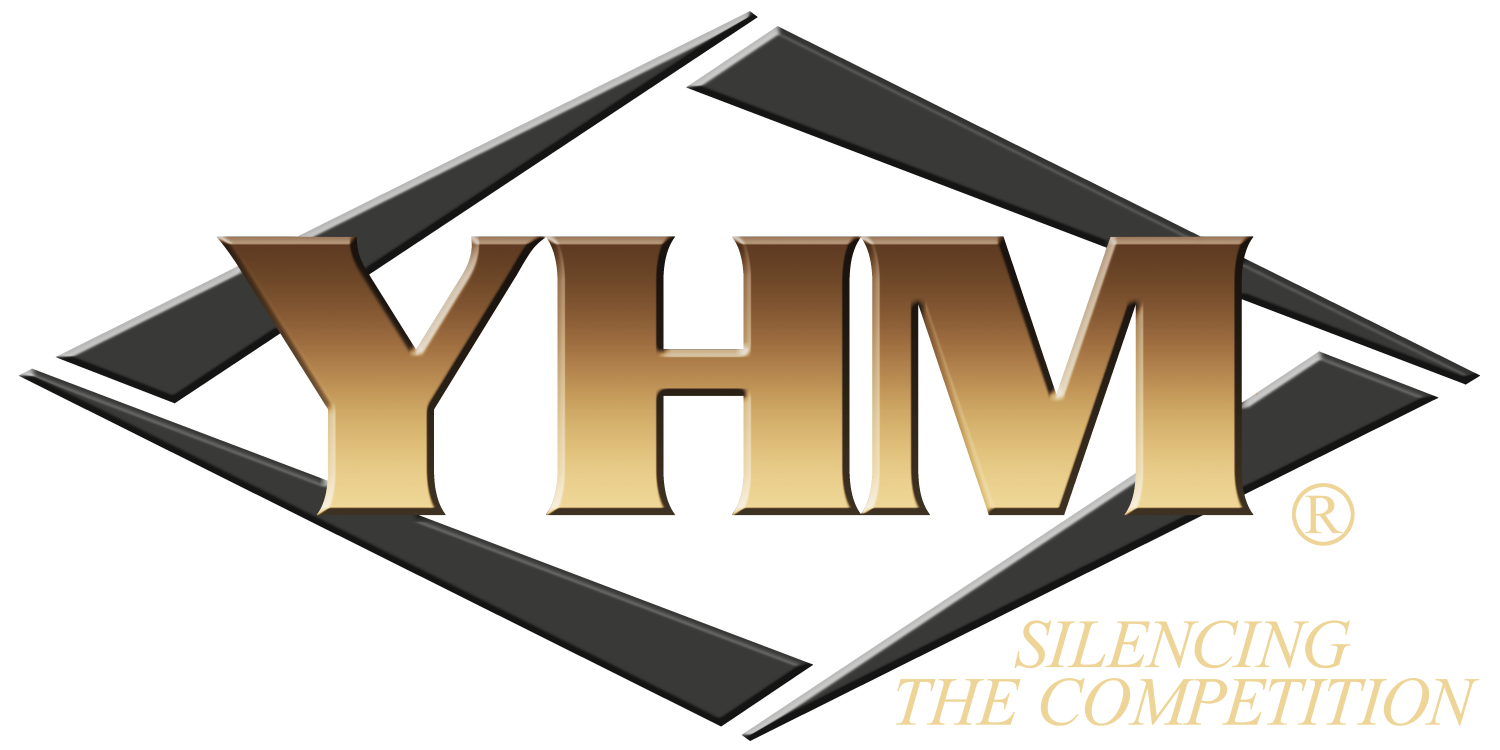Good afternoon shooters and thank you for joining us for another edition of TFB’s Silencer Saturday brought to you by Yankee Hill Machine, manufacturers of the awesome YHM Turbo K rifle suppressor. Last week we dove into the TacSol Pac-Lite IV TSS integral suppressor for the Ruger Mark IV and 22/45 line of .22LR pistols. This week we stick with our rimfire journey and take a brief glimpse at the SureFire SF RYDER 22. Or maybe shine a light on its suppression levels or Illuminate its features? Ok, I’m done.
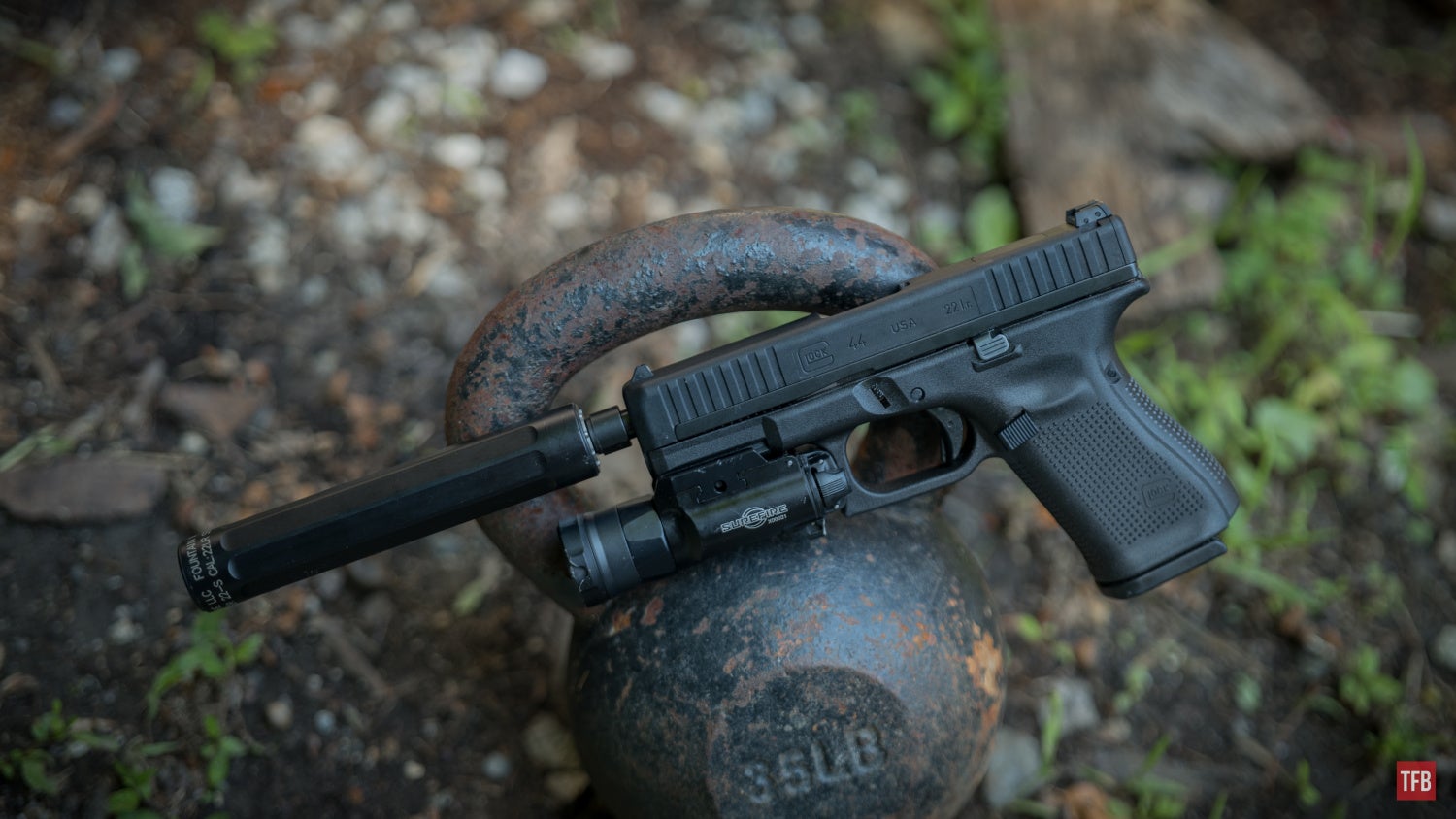
SILENCER SATURDAY #186: Lumens Or Decibels? The SureFire SF Ryder 22
This isn’t a new silencer. About five or six years ago, SureFire jumped into the rimfire game, presumably focused on the consumer market and not government contracts. The original SF Ryder 22-A was made with aluminum baffles which helps with weight but makes cleaning slightly more difficult. Aside from the unique pig-nose baffles, this is a fairly standard rimfire suppressor.
SureFire @ TFB:
- SureFire’s New Ryder Mini 22 Mini Suppressor
- TFB Behind The Gun Podcast Episode #16: Andrew Wright And George Syrengelas From SureFire
- Surefire’s Newest, Lightest Rifle Can Ever: The SOCOM 65-Ti
- [SHOT 2020] New Silencers From SureFire
As a company, SureFire should need no introduction. They have been manufacturing flashlights, weaponlights and suppressors for decades, many of which are standard issue for U.S. and foreign military soldiers around the world. SureFire’s design and build quality is apex-level, supplying military and civilian customers with rock solid products.
In the SureFire suppressor world, criticism can come by way of sound reduction, weight and mounting options. And until recently I would somewhat agree, but I would have reminded prospective buyers that certain models might not have designed for specifically for them or their use cases. The SOCOM line of suppressors were built to reduce flash, avoid point of impact shift, and hold up to extreme abuse. Noise reduction was aimed at achieving MILSTD acceptable levels – under 140 dB. Noise reduction was also designed around at-the-muzzle levels not at-the-ear levels; avoiding detection from the enemy and protecting your fellow soldiers on the line was the priority.
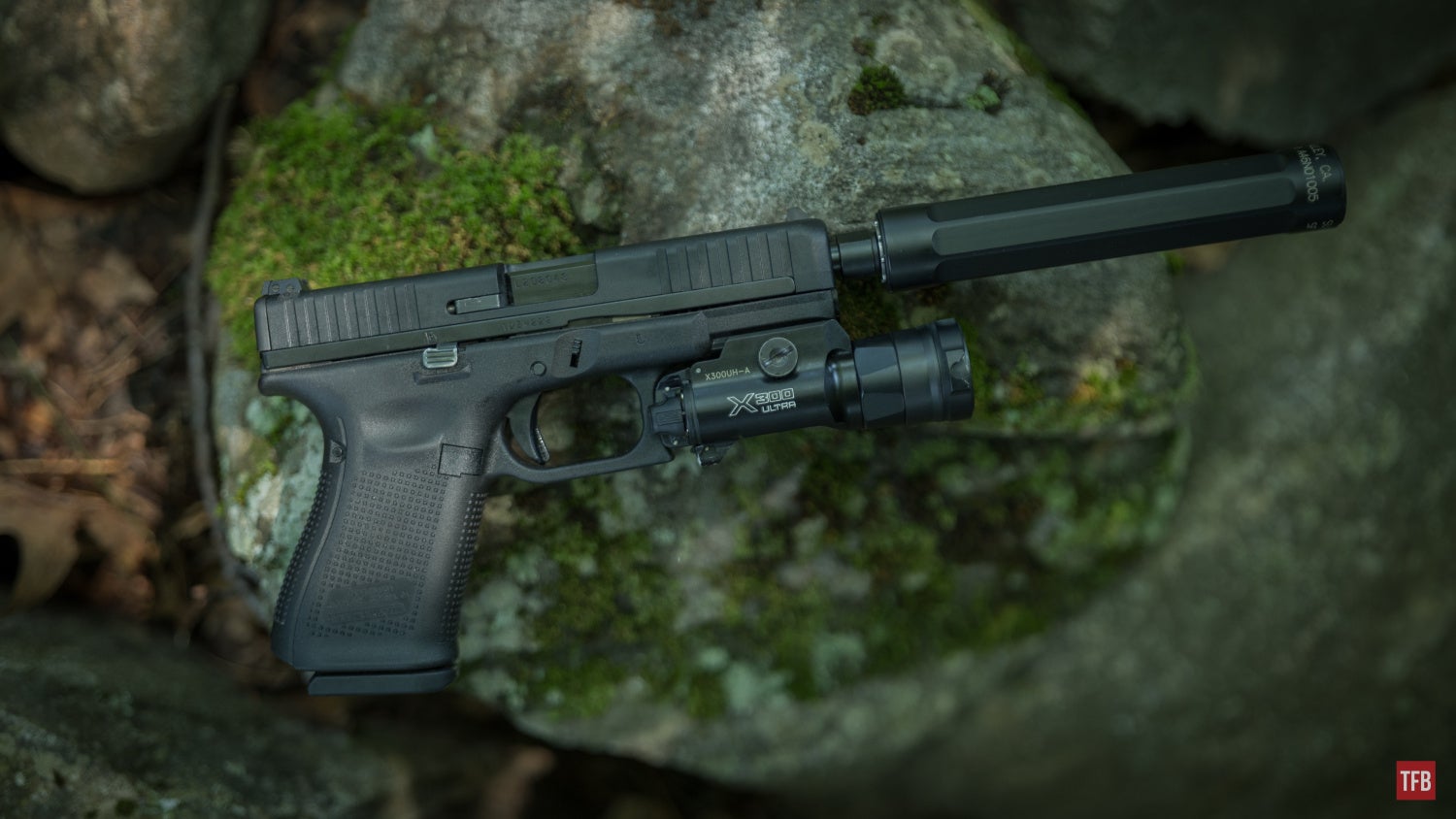
SILENCER SATURDAY #186: Lumens Or Decibels? The SureFire SF Ryder 22
If you are looking for someone to blame, the USGOV sets their contract requirements.
In recent years, SureFire has built a family of what I’d call consumer-focused silencers that prioritize shooter performance rather than purely meeting MILSTD testing requirements. The SPS-300 and the SOCOM300-Ti are fantastic 300BLK/7.62 suppressors that ranks near the top of the available options on the market. The Ryder 9, even with its comparatively small diameter is an excellent performer on 9mm pistols and submachine guns,
And the Ryder 22-S can definitely hold its own with other leading brands in terms of noise reduction. But there are a few detractors that potential buyers should note before buying.
First, let’s take a look at the details.
SILENCER SATURDAY #186: Lumens Or Decibels? The SureFire SF Ryder 22
Select Small-Caliber Excellence. The SF® Ryder 22-S is a lightweight, thread-on suppressor optimized for .17 HMR, .22LR and .22 Mag rimfire pistols and rifles. Built to exacting standards like our SOCOM Fast-Attach® suppressors, it features a patented aluminum body with rounded ends and flutes for reduced weight without sacrificing strength. Weighing just over 5 ounces and measuring only 5.4 inches long, the SF Ryder 22-S minimizes effects on weapon weight and maneuverability. Our proprietary heat-treated stainless steel baffles provide superior sound attenuation and tremendous durability even during full-auto use. Our proprietary internal design reduces carbon buildup and keeps the suppressor clean longer. It’s also easy to disassemble, clean, and reassemble. The SF Ryder 22-S is simply the best thread-on suppressor available for .17 HMR and .22 shooters.
SUREFIRE Ryder 22-Mini Specifications:
- Full-auto rated
- Weight: 5.2 ounces
- Length: 5.4”
- Stainless steel baffles equate to 2 ounces heavier than aluminum baffles (Ryder 22-A unit)
- Build material: stainless steel
- Finish: High-temp Cerakote
- MSRP: $469
- User’s manual: https://assets.surefire.com/uploads/2019/07/71-01-919_Ryder-22-S_Rev-H.pdf
- SIlencer Shop: $422 (local dealer pricing may vary slightly)

Disassembly:
Always read the manufacturer’s user manual before shooting or performing maintenance on your silencer.
Unfortunately, I didn’t have any of the takedown tools available at the time of the review so we’ll just have to use a combination of words and imagination. Think of it as a thought exercise. I’ve included excerpts from the process found in the owners manual.
- Insert the Disassembly/Assembly Tool Central Rod into the bore of the suppressor front plate. Align the Disassembly/Assembly Tool Pins in the blank holes in the suppressor front plate and push the tool snug against the front plate.
- Rotate the Disassembly/Assembly Tool counterclockwise, while holding or rotating the suppressor clockwise, until the front plate is unscrewed. (Fig. 2)
- Push the RYDER 22-S Front Plate, Baffel Stack, and Back Section through the suppressor tube. Note: After the suppressor has been shot, the baffle stack may become difficult to push through. If this is the case, screw the Spud Extension Tool into the mounting threads of the back section and use the tool for leverage to push the baffle stack through. Unscrew and remove the Spud Extension Tool once the baffle stack has been pushed through and the suppressor tube has been removed.
- Slide the components- Back Section, Baffle #5, Baffle #4, Baffle #3, Baffle #2, Baffle #1 and the Front Plate – off of the Disassembly/Assembly Tool Central Rod.
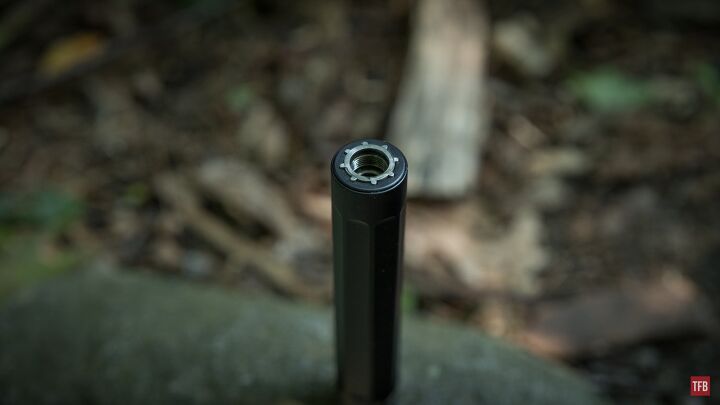
SILENCER SATURDAY #186: Lumens Or Decibels? The SureFire SF Ryder 22
Here’s my first concern: the threading on the Ryder 22-S is too shallow. It does include a spacer for longer threads, but my test unit didn’t come with one. Almost every rimfire gun I own has threads that are standard 1/2 x 28 pitch, but the Ryder 22-S would only index off the first baffle and not the barrel shoulder. The only two that came close were the GLOCK 44 and the Beretta 21A. It seems that SureFire could have extended the mount another quarter of an inch and included more threading.
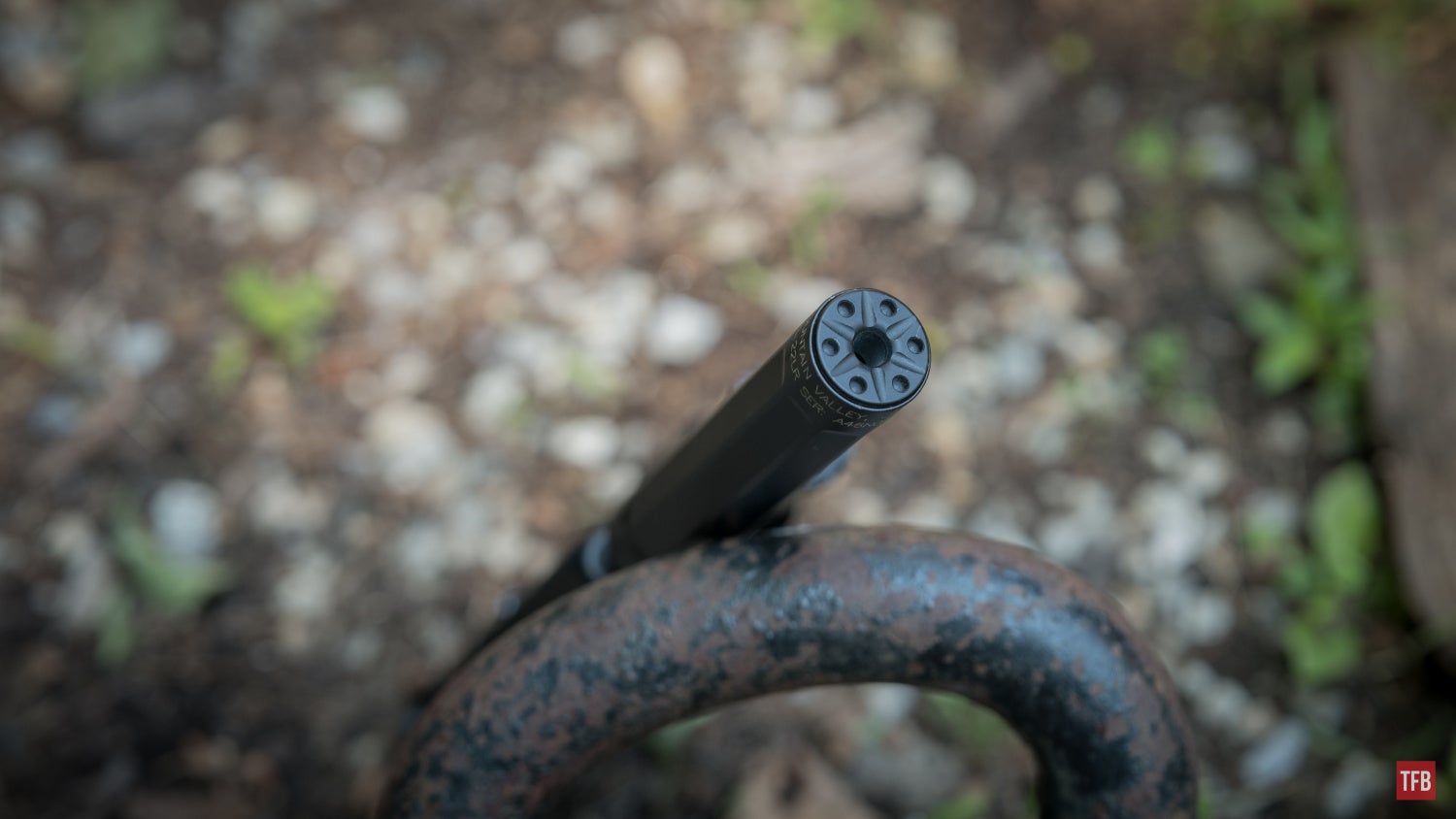
SILENCER SATURDAY #186: Lumens Or Decibels? The SureFire SF Ryder 22
Next, the Ryder 22-S uses an antiquated bolt and nut takedown device to remove the baffle stack for cleaning. I’d rather see a shielded-type system, but since I don’t have one to personally test, I can’t give you any first hand information.
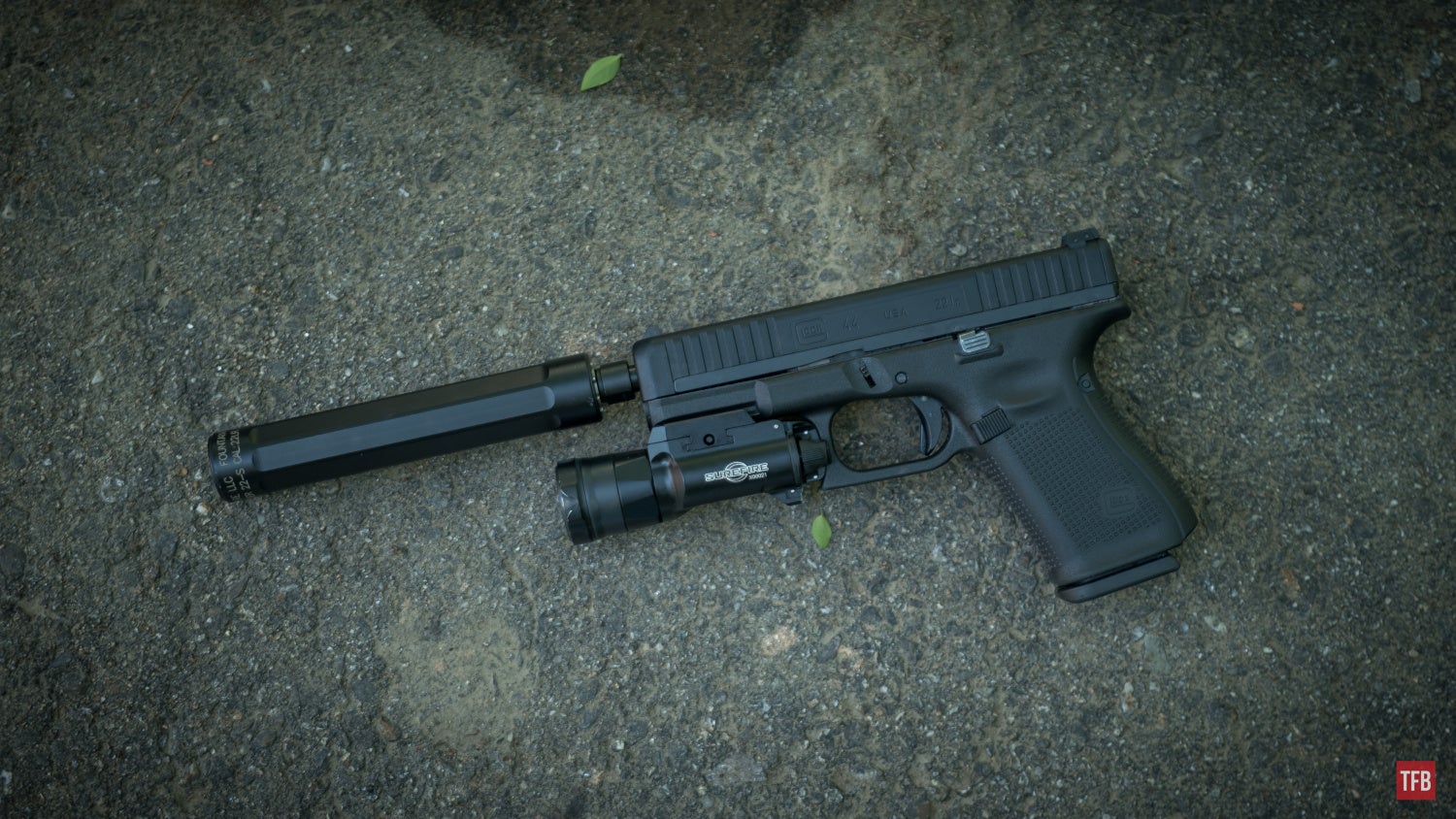
SILENCER SATURDAY #186: Lumens Or Decibels? The SureFire SF Ryder 22
And lastly, while not terrible, the price could be slightly more competitive. A street price of $350 would be a little easier to accept given the lack of extra features.
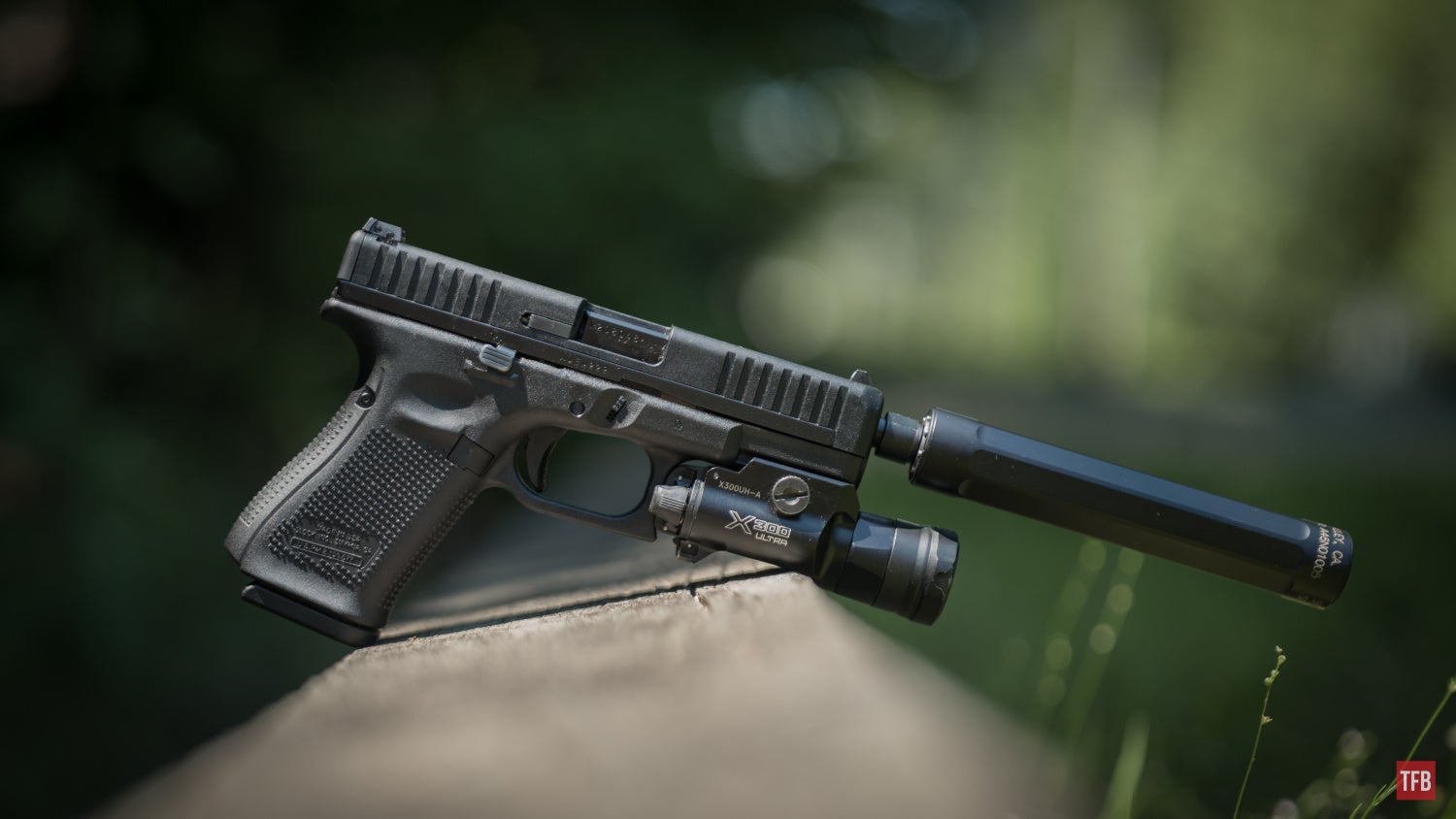
SILENCER SATURDAY #186: Lumens Or Decibels? The SureFire SF Ryder 22
Like most quality rimfire suppressors, the SureFire Ryder 22 doesn’t disappoint. It’s pretty quiet and I didn’t notice much of a first round pop. It should bring a smile to the face of all but the most discriminating rimfire aficionados.
The biggest disappointment is the Ryder’s thread length limitations. If you can put up with using a spacer for most of your guns, it’s a solid performer.
Have a great weekend everyone. We’ll see you back here next week for another Silencer Saturday.
 Your Privacy Choices
Your Privacy Choices
